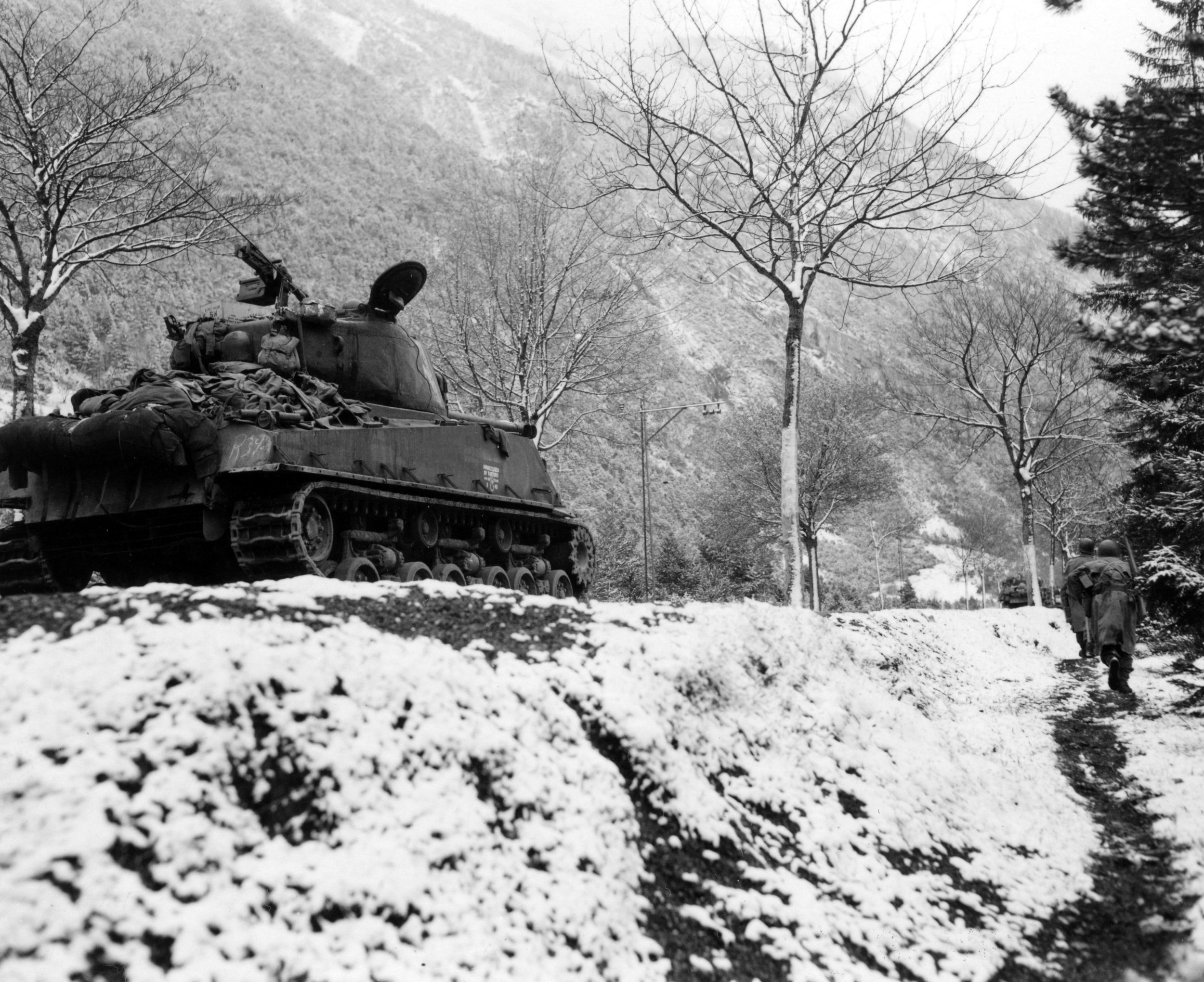
Attached Armored Units
During World War II, U.S. Army armored divisions were comprised of several smaller tank battalions. While under the direct command of the Armored Divisions, it was not uncommon for specific tank battalions to be detached for a period of time and attached to non-armored divisions for armored support. Due to the need for the combat power of the armored units across the front, U.S. Army tank battalions were in almost constant combat during the war; it was not unusual for these units to be engaged in combat for one hundred consecutive days of fighting.
The various tank battalions that were attached to the 103rd Infantry Division were armed primarily with M4 Sherman Medium Tanks, which became one of the most iconic military vehicles of World War II. These tanks were equipped with either a 76mm cannon or 105mm cannon (depending on when they were made). Along with the main gun, the M4 was equipped with one .50 caliber and multiple .30 caliber machine guns. M4 Sherman tanks were essential for providing both anti-tank and anti-personnel fire on enemy forces and were a mainstay of the allied battle plans that prioritized rapid movement. Most tank battalions were additionally equipped with a small number of M5 Stuart Light Tanks. These vehicles often had a smaller caliber main turret (37mm), as well as lighter armor (which proved largely inadequate when facing enemy tanks or anti-tank guns). The M5 was used for either indirect or direct fire support against enemy personnel, as well as on occasional reconnaissance missions due to their speed and mobility.
The soldiers of the 103rd Infantry Division were fortunate to have had some of the most storied tank battalions of the war attached to their unit. The 756th Tank Battalion had an extensive combat history long before it was attached to the 103rd Infantry Division, fighting through both Africa and Italy in 1942 and 1943 before joining in the invasion of France in 1944. The 781st Tank Battalion did not have the same combat experience as the 756th, but both were essential in supporting the 103rd and other infantry divisions as they battled against the German Operation Nordwind in January 1945, which was the final large scale German operation of World War II.
Another legendary yet largely forgotten tank battalion that was attached to the 103rd Infantry Division was the 761st Tank Battalion (“Black Panthers”), a segregated combat unit manned by African American soldiers of the U.S. Army during World War II. This battalion arrived in France and entered the front lines within days of the 103rd Infantry Division, and by the time the unit was attached to the 103rd, it’s tankers had proven themselves time and again in combat as an extremely aggressive and capable tank battalion. Their notable combat record includes the awarding of one Medal of Honor, whose recipient who did not receive this award until 1997 when the Clinton Administration ordered a comprehensive review to determine why no African Americans had received the Medal of Honor during World War II. The 761st Tank Battalion spent an amazing 183 consecutive days in combat during their service in Europe.
Along with these storied Tank battalions, the 103rd also served with the 47th and 48th Tank Battalions of the 14th Armored Division, and the 43rd Tank Battalion which was part of the 12th Armored Division. Each of these units provided extensive support to the infantry regiments of the 103rd during their operations in France and Germany and repelled numerous counter-attacks alongside the 103rd Infantry Division and other divisions of the Seventh Army.
Photo Credit: T/4 Irving Leibowitz. SC 337281- (409th Task Force photo series) Here, infantrymen in partial cover of a ditch, move up toward sound of machine gun fire. May 2, 1945. U.S. Army Signal Corps Archive via Flickr.